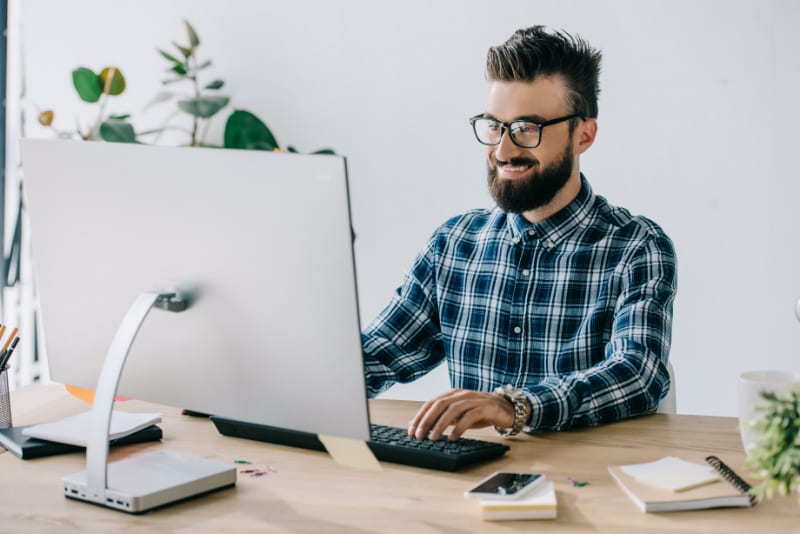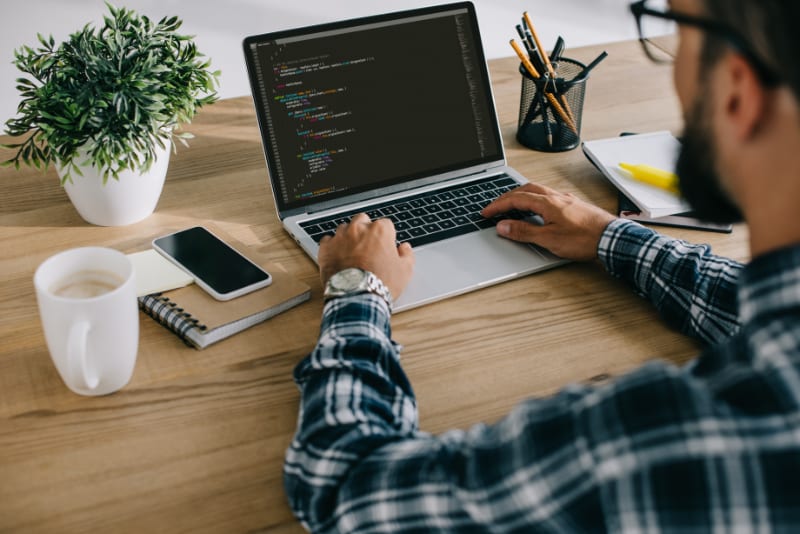Many start websites for their personal brands, business, and blogs with the hopes of reaching a wider and more engaged audience. Although many might have a strong passion for the website they are creating, oftentimes these websites fail to even make an appearance on search engine result pages and causing them to go unnoticed by potential customers, readers, and researchers. In order for a website to stand out and receive the viewership it deserves, it needs to put the proper on-page optimization techniques in place.

Table of Contents
What is On-Page Optimization?
Page Optimization refers to the process of increasing a website’s visibility and reach by improving its location in the search engine result rankings. It is part of set or search engine optimization practices that allow a website to improve its overall quality and increase the traffic it receives across search engines. If a website wants to increase its visibility, it must be sure to make use of various on page SEO techniques in order to reach a wider audience. This article will define and discuss the most important elements regarding page optimization and how to properly implement the right page set strategies.
1. Quality Content
One of the simplest ways to begin on-page optimization is to improve the quality of the content on the site. In order for content to be of high quality, it must actively supply a need. Whether the content answers a burning question, educates on a specific topic, or entertains a certain group of people; the significance and value of the content should be easily identifiable. If not, search engines will not be able to effectively recognize your website’s relevance to its searchers and this could lower its ranking in the search results.
Creating content that is of a substantial length is another extremely important on-page SEO technique. Content that is too long can easily be dismissed by search engines as being frivolous, untrustworthy, or simply not relevant to its users. Making sure your content is an appropriate length for the audience in mind and the topic at hand is essential in optimizing your site’s web pages. Make note that content that is solely relying on length rather than quality will not garner any substantial success in search engine rankings.
Your site’s content should keep your viewers engaged for as long as possible, so creating content that is unique; whether it be in the information it provides or the way it provides it, will be an essential attribute in optimizing your site. Avoid remaking content that other sites have done plenty of times. Bring something new and fresh to the table. Figure out what your audience is lacking and find a way to adequately provide content that fills that need in a unique and intriguing fashion.
2. Keywords
When it comes to page optimization, focusing on keywords is a great first step in the process. Keywords are crucial in giving a website a boost in search engine rankings. Keywords are words or phrases that a search engine user might write in order to find information on the web. It is imperative to narrow down what keywords are relevant to the information your website is providing. Once you have those keywords in mind, make sure to place them in multiple different parts of the website or webpage including the title text, subheadings, and paragraphs. Keep in mind; however, to preserve the natural flow of the text and so as not to impede on its readability.
When coming up with potential keywords, think about what a potential viewer of your website would type into a search engine. Usually, internet users do not type in full-length sentences into the search bars. Instead, they write a few short words or phrases and these are usually very specific to what it is they are searching for. With that said, try to use keywords that are specific but broad enough that a large majority of your target audience is using them.
3. Images
Optimizing the images of a website is another great on-page SEO technique that helps drive traffic to a site. High definition images and captivating video clips that correspond to the topic being discussed engage audiences and if they are intriguing enough, will keep internet users on the site for longer. The longer they are on the site, the longer they are engaging with your content and the more search engines will associate your site’s content as being valuable. This positive feedback loop is something you should strive for with every piece of content that is published on the site.
When it comes to optimizing your images and videos, there are multiple ways to do so. Apart from picking the highest-quality and most visually appealing images that relate to your topic, images can also be optimized by creating alt text and image descriptions. When creating them, be sure to use your keywords. The more chances you can incorporate your keywords into the text, the better your website will fare in comparison to others with similar content.
4. Links
Linking is crucial on page SEO techniques that will help keep internet users engaged on the site. Through outbound linking to sites that are already deemed trustworthy and reliable by search engines standards, your website automatically becomes more trusted in the eyes of the search engine. However, be wary of placing too many outbound links on your site. Too many can cause your site to become diminished in the search results or cause viewers to rely more on the sites you are linking rather than your own. Never forget the value your own website provides and remember that it is the first priority.
With this in mind, internal linking is a great way to bring the audiences’ attention back to your site and it’s another essential element of on-page optimization. When linking to other pages on your site, you signal to the viewer that you are a valuable source of information and you establish credibility in that you have further information on related topics. In effect, you could potentially create a loyal viewer who will keep your site in mind in the future. The loyalty you establish with the viewers of your site will be another signal to search engines like Google that your site is valuable and should have a higher status on search engines. All in all, internal and outbound linking will significantly increase your website’s reach when done correctly.
5. Social Media Sharing
One of the biggest and newest on-page SEO techniques is social media button sharing. In this day and age, social media has taken our world by storm and in order for any website to truly optimize itself, creating accompanying social media that can be easily accessible to its users is crucial to its success. Although many social media platforms harbor millions of users from around the world, a website should make sure to create and link only its most relevant platforms. These would be the platforms that have the strongest and most abundant follower base and where the platform that the majority of their target audience uses and interacts with.
When determining which social media to create and include on your website, always have the target audience in mind. Think about demographic factors such as age, gender, race, and nationality. Oftentimes different groups will populate different sites. Tiktok; for example, is extremely popular with teenagers and young adults. Facebook, on the other hand, is far more popular with middle-aged men and women. Figure out where your audience resides and use their preferred social media platform as a way to optimize your website. Social media is also a major part of off-page optimization practices.

Mobile Device Optimization
On-page optimization is not only for desktop devices. Mobile devices are also key players in the game. Chances are, you are reading this blog from your tablet or phone. And if you are, you have noticed that it fits on the screen and is readable. Well, that is an example of good mobile device optimization.
But, not every site is like that. Some websites tend to be optimized only for computers. This means that viewing them from a phone is difficult. You have to zoom in, the text is not aligned, and it becomes a pain. In fact, this attributes to bounce rates.
E-commerce websites need mobile compatibility, because it helps stimulate more sales. With technology, people don’t even need their cards on them to pay from their phones. But why pay on a website that does not look good from your phone? Optimize your e-commerce site for more sales.

What are the next steps?
After implementing on-page SEO techniques as efficiently as possible, you can now focus on off-page optimization techniques that will help optimize your website’s search ranking through methods that are not visible on the website itself. With that said, it is important to recognize that the process of on-page optimization is not a one-and-done deal. It is a continuous cycle of improvement and your website will need to focus for as long as it is active.

Making sure content is always of quality by keeping in mind its relevance and value to your target market will be an ongoing process in your website’s page optimization journey. Updating images and videos on your site that contain keyword-filled alt text and descriptions will improve your audience’s engagement and interaction with your site. And using appropriate links to establish credibility and loyalty as well as making sure your site contains relevant social media share buttons where viewers can share and interact with your content off your website will help drive even more viewership.
Whenever you make any sort of change to your website, be sure to keep these five on-page SEO techniques in mind. Following them closely will significantly improve your website’s success!
FAQ:
- What is the difference between on-page optimization and off-page optimization?
- What is on-page SEO?
- Why is on-page optimization important?
- What are good SEO services?
- What is the main role of SEO?



Contact Us Today!